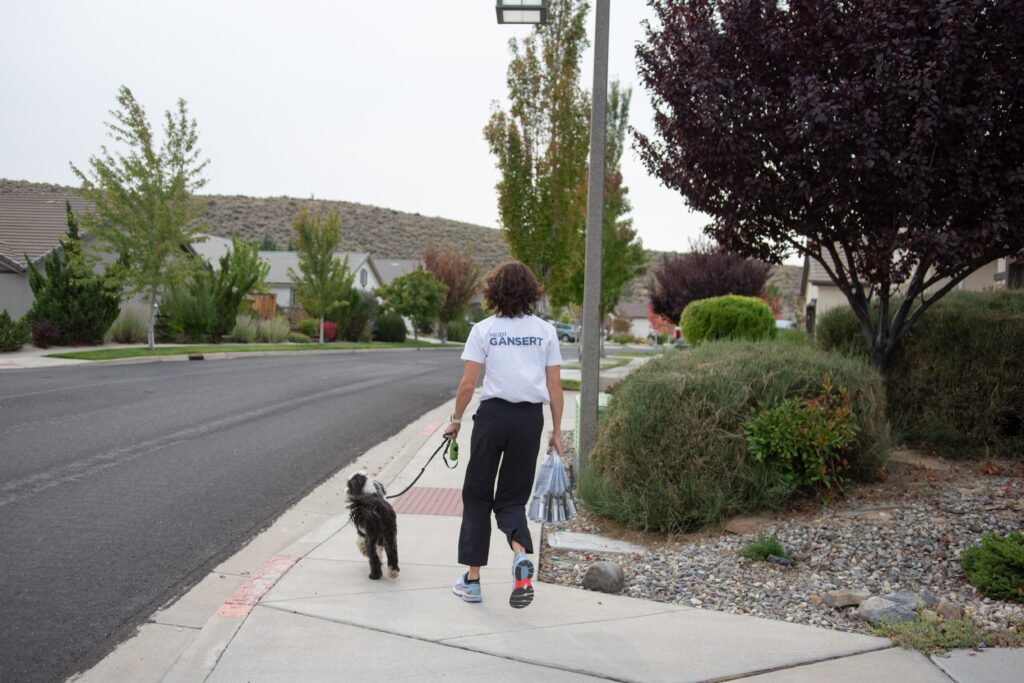After decades of backing Republican presidential candidates before swinging blue for Obama, Clinton, Washoe again a battleground in 2020
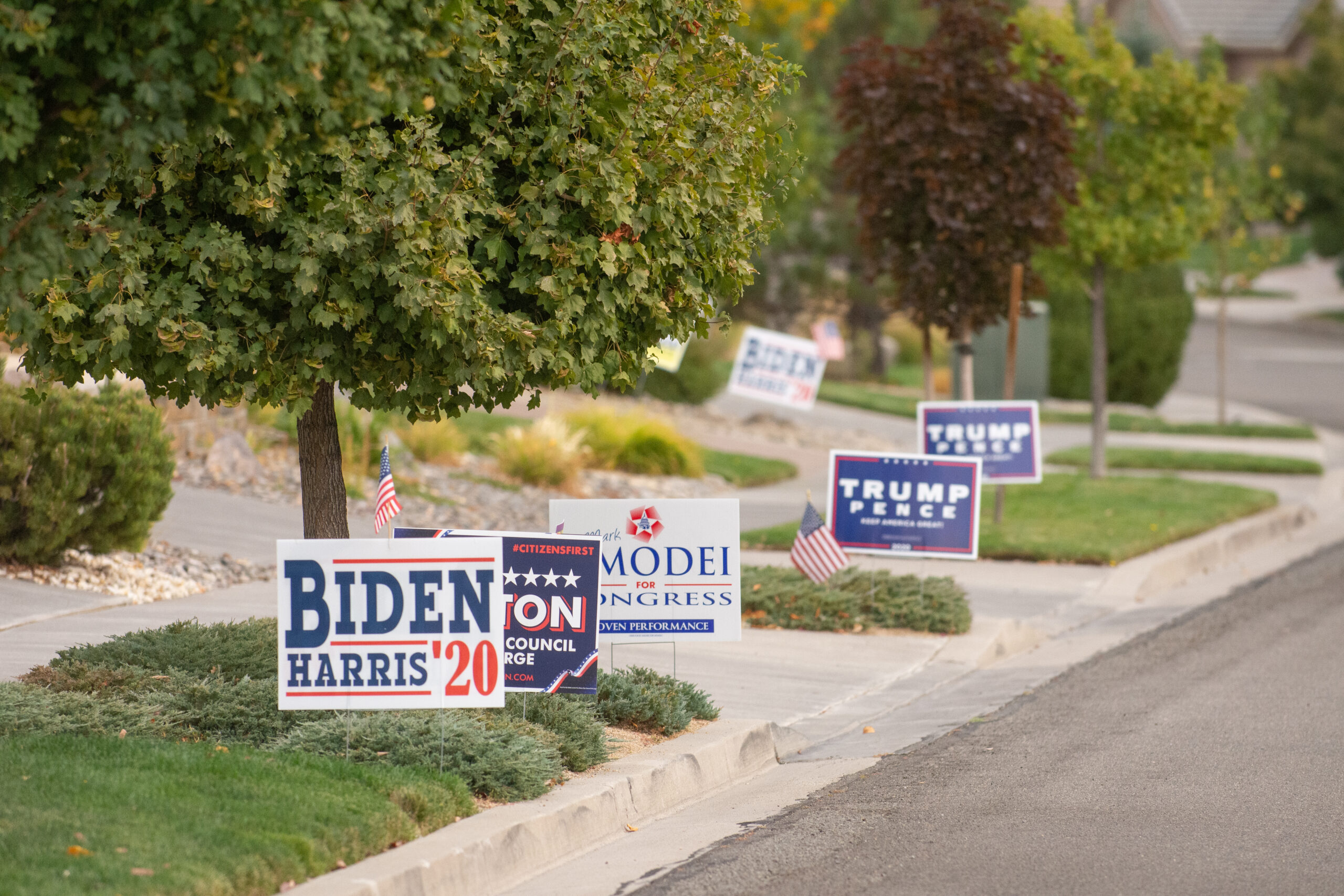
For decades, Washoe County has been a study in contrasts.
Take the 1964 election. The overwhelmingly Democratic electorate in Washoe at the time voted to give its party’s presidential nominee, Lyndon B. Johnson, his first full term in office, a little less than a year after he ascended to the presidency in the wake of John F. Kennedy’s assassination. But residents of Nevada’s second largest county that year also resoundingly supported Paul Laxalt, the Republican challenger to Democratic U.S. Sen. Howard Cannon.
A decade later, Washoe would again back Laxalt, by then the former governor of Nevada, for U.S. Senate, buoying him with a 8,334-vote margin, or about 19 percentage points, this time helping him defeat a young man by the name of Harry Reid by 624 votes statewide. At the same time, Washoe resoundingly supported Mike O’Callaghan, the popular Democratic governor, in his 1974 re-election bid by an overwhelming 47 percentage point margin.
It has happened time and time again in Washoe. Over the last 60 years, there have been 20 election cycles in which two marquee races — presidential, gubernatorial or senatorial — were on the ballot in the same year. Of those, Washoe County split its votes between the Republican and Democratic candidates in half of the cycles.
In the other 10 cycles, Washoe voted for two Republicans seven times and two Democrats three times. Four of those double Republican wins were when the county was made up of more Democrats than Republicans, and two of those double Democratic wins were when the county had more Republicans than Democrats.
"When the state was two and a half to one Democrat, Paul Laxalt was elected governor and United States senator twice,” said Pete Ernaut, a longtime Republican consultant in the state. “That goes back to the spirit of Nevada, which I think is still alive.”
Most recently, Washoe County was responsible for helping to carry former Secretary of State Hillary Clinton to a narrow victory over President Donald Trump. She won the county by 1.3 percentage points and the state as a whole by 2.4 percentage points. But Washoe also voted in support of Joe Heck, the Republican congressman, though his slim, 0.8 percentage point margin in Washoe wasn’t enough to carry him to victory over Catherine Cortez Masto, the Democratic former attorney general, who drummed up so much support in Clark County that she won while losing every other county in the state.
Political observers have a number of theories about why Washoe has been so swingy — and so willing to ticket split — over the decades. They chalk it up to the small town feel in Washoe, home to Reno, nicknamed the biggest little city, where the kind of retail politics that can feel somewhat antiquated in the digital age still matters. They chalk it up to personality, saying that who a candidate is and what they stand for matters more than the D or R behind their name. They increasingly chalk it up to the significant growth of registered nonpartisans in the county.
With politics polarized at the national level, some believe the state’s independent streak — with Washoe County as a microcosm of that — may be fading. Ticket splitting is becoming less and less common around the country, and candidates down the ballot are often tied to the person at the top of the ticket.
Nevada has increasingly been thought of as a blue state, and even Washoe County has swung bluer than it has in a long time in recent years. Barack Obama, in 2008, was the first Democratic presidential candidate Washoe voted to back since LBJ — and the county voted again for Obama in 2012 and then for Clinton in 2016. Last cycle, Washoe voted to support both Jacky Rosen and Steve Sisolak for U.S. senator and governor, respectively — two Democrats from the south — snubbing their Republican opponents from the north.
Though Washoe may appear bluer than it’s been in a long time, Republicans and Democrats alike are taking Washoe County seriously this year — and they have to. Besides the presidential race, there’s a key state Senate seat that if Democrats flip while holding on to two competitive seats could mean Democratic supermajorities in both chambers of the Legislature, and Republicans only have a 0.2 percentage point voter registration advantage in the county.
“The Democrats have been fired up and done amazing outreach and amazing work for multiple cycles, and we’ve seen some incredible wins,” said state Sen. Julia Ratti, a Democrat who represents parts of Reno and Sparks. “But it still just always feels like it’s in play. The margins are always close enough that I would never take anything for granted.”
If the year 2020 proves one thing, it may be this: There’s Red America, there’s Blue America, and then there’s Washoe County.
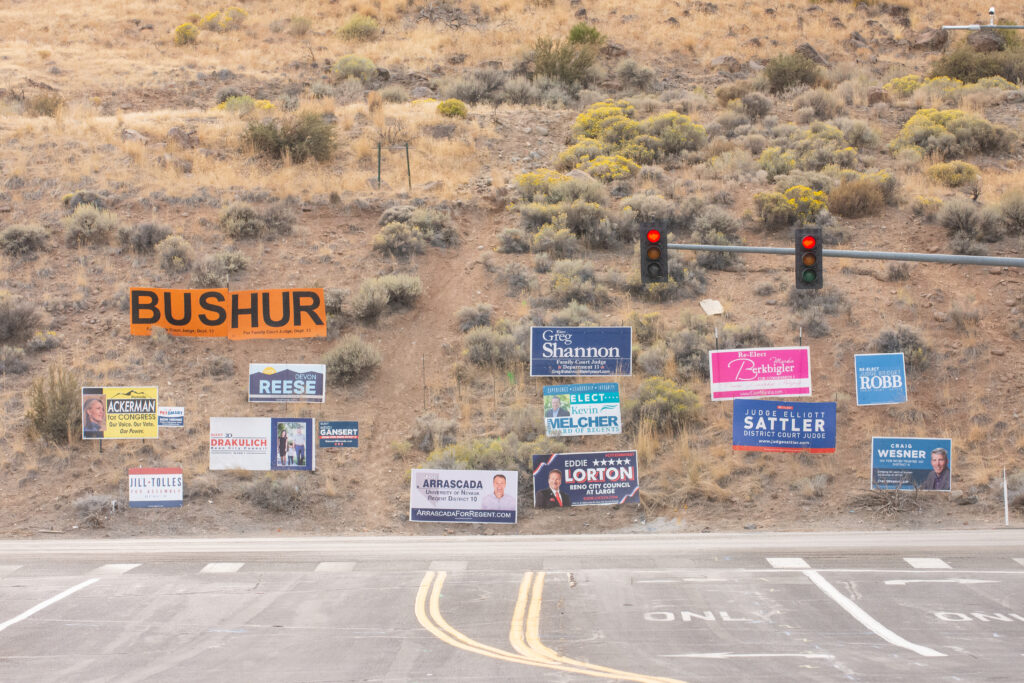
The rise of nonpartisans
Reno Mayor Hillary Schieve is well acquainted with Washoe County’s independent streak. She is, after all, a registered nonpartisan herself.
As a small business owner turned politician, Schieve has witnessed firsthand some of the most significant changes in Washoe County over the last decade, from the revitalization of Midtown in Reno to a tech boom that has brought Tesla, Panasonic, Amazon and Apple, among others, to Northern Nevada. As tech companies have sought to expand in tax friendly Nevada instead of California, their employees have flocked to the Silver State, finding that things that seemed out of reach in the Bay Area, such as owning a home, are attainable in Washoe County.
Schieve said those employees have brought with them a much more socially liberal mindset, some a bit more pro-business than the typical Democrat.
“There’s a pretty big California influence happening here,” Schieve said. “They tend to be much more socially liberal, but economically, fiscally responsible.”
At the same time, Schieve has noticed a growing disillusionment with the major political parties as people find their views don’t line up with the traditional party lines.
“People say to me all the time, ‘I might have a D or an R behind my name but I’m so much more a nonpartisan.’ I hear that all the time. I don’t think it’s black and white,” Schieve said. “‘There’s a lot of things I agree with D’s on, a lot of things I agree with R’s on.’ I hear that a lot. I don’t think it’s cut and dry.”
The data bear out that nonpartisans are playing a bigger role in Washoe County than they ever have. Voter registration numbers are up by about 78,000 countywide over the last decade. Nonpartisans, who have seen about 33,000 new registrations over that period, make up a little less than half of that, which has driven down the share of both Democrats and Republicans in the electorate.
Nonpartisans currently make up about 22.5 percent of voters in Washoe County — up from 15.4 percent in 2010 — with Republicans and Democrats now nearly even in their voter registration numbers, 35.4 percent and 35.2 percent, respectively.
As their numbers have grown, a lot of time and effort has been spent on figuring out just who, exactly, nonpartisans are. Some are what are sometimes called “closet partisans,” those who consistently vote the party line even though they are registered as nonpartisans. Others are voters who split on issues between the two parties — perhaps someone who is concerned about climate change but fiscally conservative.
“I think part of it is they don’t feel at home in either of the major two parties,” said Greg Ferraro, a Republican consultant in Reno. “You can mix and match the issues because they don’t feel that either party is representative of their collective viewpoint.”
There’s a third subset of nonpartisans, those who are registered to vote but not actively politically engaged.
“I think the main commonality in all of those groups is they generally don’t like the conflict associated with politics,” said Jeremy Gelman, a political science professor at the University of Nevada, Reno. “Not registering is a way to express that displeasure. These are people who watched the debate and were put off by it.”
There is, however, a great deal of speculation as to how swingy nonpartisan voters truly are and how many of them are undecided about, say, whether to vote for Donald Trump or Joe Biden for president.
A recent New York Times/Siena College poll found about 92 percent of likely voters in Nevada have decided who they’re voting for; only 8 percent said they could still change their minds. But among those not registered with either major political party, that certainty dropped to 83 percent, with 15 percent saying their vote could change.
“There are a lot of people moving into Washoe County from California. That’s a certainty,” said state Sen. Ben Kieckhefer, who represents parts of Reno, unincorporated Washoe County and Carson City. “But I don’t think it’s a foregone conclusion about which way they’re going to vote.”
All the same, Democrats have had more success in Washoe County as of late than they’ve had in the last six decades. In addition to the growth of the tech industry, Ernaut attributes recent Democratic successes to the fact that college educated women just aren’t voting Republican.
“Traditionally Washoe County has really been driven by women voters,” Ernaut said. “So when you take the fact that most college educated women aren't voting Republican, regardless of what party they're in, and you add to that a changing and more liberal demographic, though registration is sort of even, I think from a performance standpoint Washoe is much more decidedly Democratic than it's ever been before."
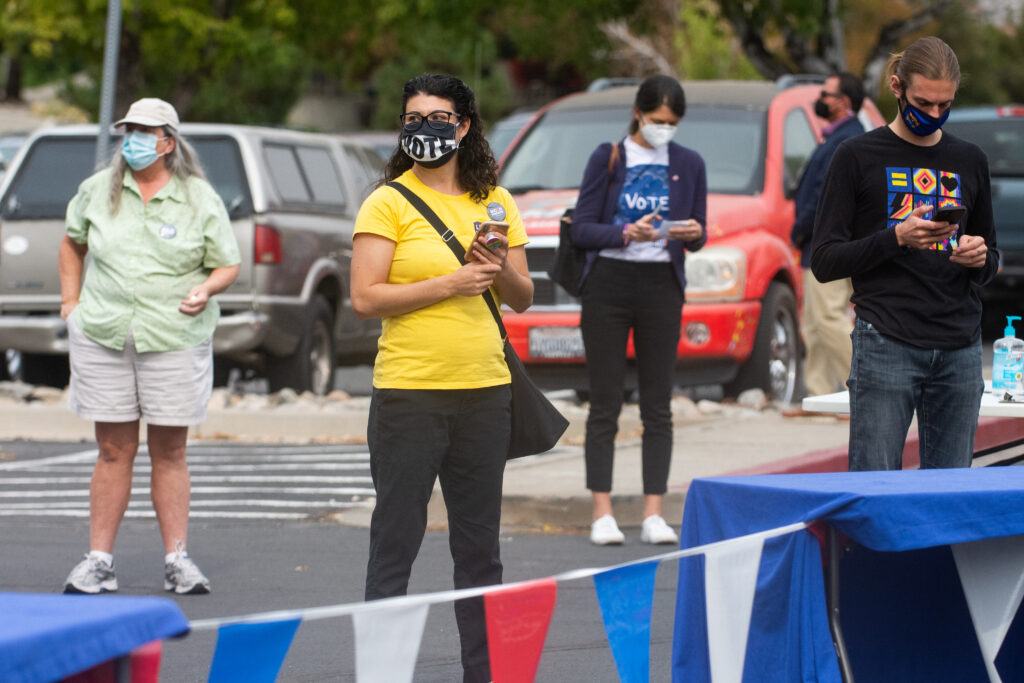
Looking back through time
Although Washoe County is voting more Democratic than it typically has, it once used to be an overwhelmingly Democratic county — at least in voter registration. In 1960, Democrats had a 14 percentage point margin over Republicans in the county and yet overwhelmingly voted for Richard Nixon for president by 10.4 percentage points.
Republicans wouldn’t overtake Democrats in voter registration numbers until 1984 and still Washoe County voted year over year — with the exception of LBJ in 1964 — for Republican presidential candidates.
“Nixon wins Washoe County in ‘60, Kennedy wins Nevada, but Nixon wins Washoe. Nixon wins again in ’68 and all the way until ’08 it is Republican,” Ferraro said. “So I don’t know that registration is an indicator.”
It’s not exactly clear why the tides turned red in Washoe in the 1980s. Some say it had to do with the increasing number of retirees moving to the county. Others attribute it to Ronald Reagan and the rise of Reagan Democrats. Whatever the case, it became increasingly popular for politicians to shift their registrations from Democrat to Republican.
"You had prominent Republicans like former Lieutenant Governor Bob Cashell, former state Sen. Randolph Townsend or [former Rep.] Jim Santini,” Ernaut said. “When you had people changing parties, and it became sort of fashionable to do that, the whole tide changed in the early 80s in Washoe County for 25 years."
But even after Washoe County turned red, its residents didn’t just stop voting for Democrats. In fact, they still won the county, sometimes overwhelmingly.
In 1988, Richard Bryan, at the time the Democratic governor of Nevada, carried Washoe County by 4.3 points in his successful bid to oust U.S. Sen. Chic Hecht, a Republican.
Reid lost Washoe County again in 1986 — though he was still elected to the U.S. Senate — but carried it in three of his four re-election bids, including by 5.1 points in 2010 against Sharron Angle, a former Assemblywoman from Washoe County. He also only lost Washoe by 2.3 points to John Ensign in 1998, though Republicans had an 8.8 point voter registration advantage in the county.
Gov. Bob Miller carried Washoe County by 12.4 points in his 1994 re-election bid, successfully defeating Republican Jim Gibbons, a then-assemblyman representing Washoe County.
And as voter registration numbers have narrowed between Republicans and Democrats over the last decade, Washoe County voters have only ramped up their ticket splitting. In 2010, voters supported Reid for re-election but backed Brian Sandoval for governor — over Rory Reid, the elder Reid’s son. In 2012, they voted for Obama for president but Dean Heller for the U.S. Senate. In 2016, they backed Clinton and Heck.
“In Washoe County I still think it matters how well that person is thought of. It’s not a county that’s going to go right down the line, or at least history tells us that’s not the case,” Ferraro said.
While Democrats carried the top two statewide races in 2018, the rest of the statewide offices were split. Washoe County backed Democrats Kate Marshall and Catherine Byrne for lieutenant governor and controller, respectively, but supported Republicans Wes Duncan, Barbara Cegavske and Bob Beers for attorney general, secretary of state and treasurer. And the county continued to back Republican Mark Amodei for Congress.
“Here’s the paradox in Washoe County. Last election, non-presidential, you’ve got half D, half R in Washoe County,” Ferraro said. “Rosen wins but Amodei wins. Cegavske wins but Marshall wins. Duncan wins but Sisolak wins. It’s mixed.”
Though ticket-splitting is increasingly uncommon across the nation, it still somehow seems to be possible in Washoe County. Most people attribute it, at least in part, to the kind of small town feel that’s still possible in Northern Nevada.
“I remember being at a Reno Aces game — Dean Heller was in the Senate — and after a game, I turned behind me and Dean Heller is standing there all by himself watching his grandkids run the bases too,” Kieckhefer said. “It’s that kind of access and exposure and interaction that people get that is something that helps drive some of those weird outcomes in elections.”
But the nationalization of Nevada politics may be starting to change some of that. Heller, the beloved Carson City boy who earned respect from Democrats during his tenure as secretary of state, lost his re-election bid to the U.S. Senate by 3.6 percentage points in Washoe to Rosen, the first-term congresswoman from Henderson, after carrying the county by 11.1 points in 2012.
Rosen’s campaign had painted Heller as “Senator Spineless,” the nail in his coffin his hot and cold relationship with President Donald Trump and his waffling on the repeal of the Affordable Care Act. It was no match for the goodwill he had earned.
“You’re starting to see that creeping of the nationalization into Washoe County politics,” Gelman said. “I think the best evidence of that was Dean Heller lost Washoe County.”
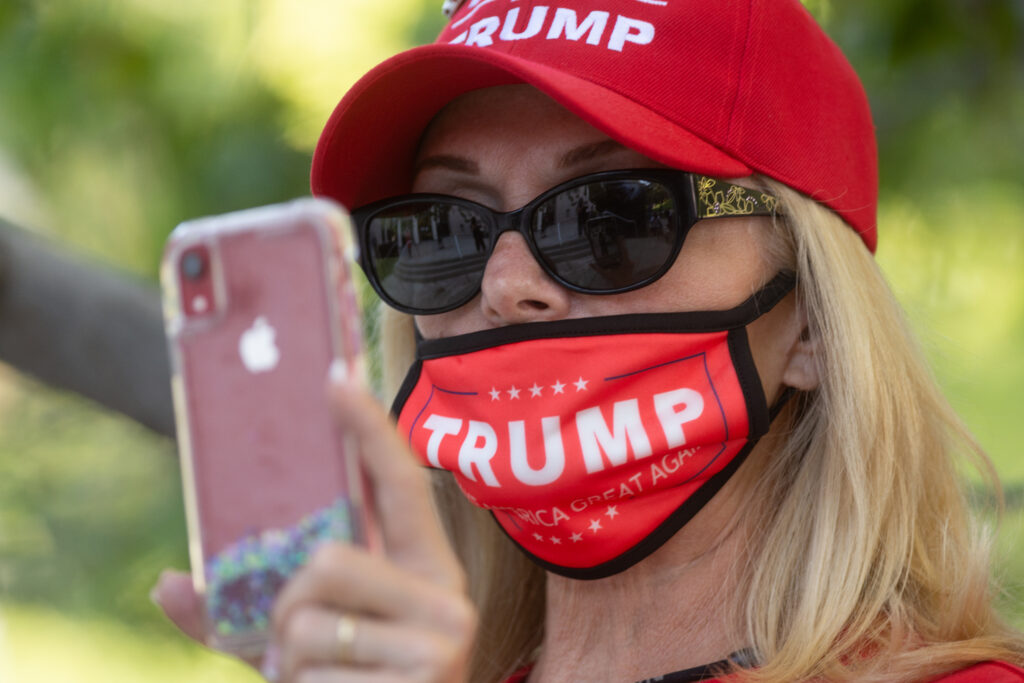
The next three weeks
Residents of Washoe County still have a lot of faith in the power of retail politics. Kieckhefer said that one-on-one interactions with voters can be “incredibly powerful” for a candidate in his experience.
“If someone has a real strong reaction to something that you voted for or something you voted against, walking through that thought process with a voter about why you did something is a really powerful way to connect with that voter,” Kieckhefer said. “Demonstrating you’re thoughtful and you do things for a reason, it’s not a reaction on a party line, they tend to respect that.”
Kieckhefer is of the mind that Washoe County voters are discerning and unwilling to buy into what he framed as the “broad brushstrokes” of national politics that state and local candidates are often painted with.
“I think that the majority of people see through that crap, frankly. You can’t sit here and try to tell me that Catherine Cortez Masto is the same thing as Nancy Pelosi and that’s going to drive my vote,” Kieckhefer said. “That’s not how people in Northern Nevada are going to do that.”
The question this year, then, is how the power of those personal relationships built through retail politics might be diminished by the ongoing coronavirus pandemic.
On the other hand, perhaps the better question is how they might be enhanced.
Ratti said that where a candidate might have once been excited to get 40 people to show up for a town hall at a library, they can host a virtual town hall over Zoom and a couple hundred people will show up.
“In some ways, the pandemic in our political lives and our personal lives has increased connection,” Ratti said. “We’re not doing the same things we used to, but we’re still connecting.”
Both the Trump and Biden campaigns have made significant investments in Washoe County this cycle. Trump Victory spokesman Keith Schipper said that the campaign has made more than 600,000 voter contacts in Washoe and has had staff on the ground in the county for more than a year.
In fact, the first Trump Victory office anywhere in the United States outside of the national headquarters was in Reno, Schipper noted.
“All the people that have visited, the investment we have made, obviously Washoe having the first field office in the country shows not only how important Washoe County is for winning Nevada, but it says a lot when you put the first office in the country in Washoe County,” Schipper said.
Trump was initially scheduled to rally supporters in Reno last month, but the venue was changed to Minden after officials at the Reno-Tahoe International Airport scuttled the event on the grounds that it would have violated state coronavirus health and safety directives. Several thousand supporters, most of them not wearing masks, showed up to the outdoor rally at the Minden-Tahoe Airport.
At the same time the Biden campaign, which has primarily run a virtual campaign since the beginning of the pandemic, though it recently announced a transition to some in-person campaigning, has been recruiting volunteers, phone banking and texting voters from afar and recently opened a campaign material distribution center at the Washoe County Democratic Party headquarters. The campaign is also now doing lit drops at voter doors four days a week with plans to ramp that up.
Alana Mounce, Biden’s state director and most recently the executive director of the Nevada State Democratic Party, attributed recent Democratic electoral success in Washoe County to the effort Democrats have put in to get voters to turn out. In 2018, Republicans had a 1.9 percentage point voter registration advantage over Democrats but Rosen defeated Heller by 3.6 points.
“In 2018, Democrats had a 2 percent voter registration disadvantage and because of the work that we focused on with independent voters, nonpartisan voters, we were able to win in Washoe County,” Mounce said. “2020 is no different. Part of the broad base of people that we are talking to, engaging with, is our nonpartisan voters, especially in Washoe County, but across the state."
With ballots now mailed out to every active registered voter in Nevada, the unknown this year is just exactly what turnout will look like in November. The primary, which saw more than 490,000 ballots cast, the vast majority of them mail-in ballots, was one of the highest turnout primaries in the state’s history.
The recent New York Times/Siena College poll taken earlier this month found that about 42 percent of respondents plan to early vote — traditionally the most popular voting method in Nevada — with another 27 percent voting by mail and 24 person voting in-person on Election Day. This year is also the first year that voters are able to register to vote on Election Day and still cast a ballot.
“I expect turnout to be very, very high, between mail-in ballots, early voting, and in-person voting with same-day registration,” Ferraro said. “We have a presidential race that will drive turnout higher … I think all of those combine to drive turnout really high.”
As unusual as this year has been, it has made it even harder to forecast what the outcome will be next month.
“The ways that we have contact with people are just so different that I don’t trust my experiences the same way that I might in another year,” Ratti said. “I feel less confident about how I even think about what’s happening in our county. And it’s not that I’m not having contact, but the contact is just so different that trying to benchmark it against any prior experience feels difficult, feels unreliable.”
As for the future of Washoe County, those who have worked in politics for a long time in the county are hopeful that its community spirit will persist even in the face of a polarized national electorate.
"I think the natural order of things at some point will mean that the pendulum will swing back to the center in Nevada,” Ernaut said, “because that's what Nevada's DNA is — to be more center and more independent.”
